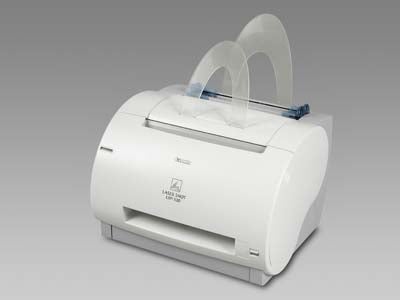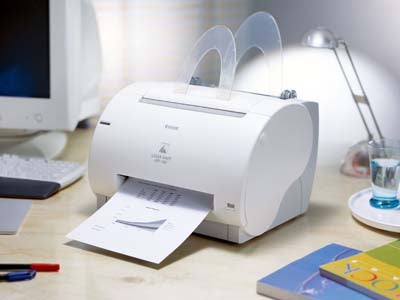Canon Laser Shot LBP-1120 Review
Canon Laser Shot LBP-1120
Canon keeps things simple with its latest personal mono laser, concentrating on speed and print quality rather than fancy features.

Verdict
Key Specifications
- Review Price: £101.00
A personal laser printer is now a pretty straightforward thing. All the technology was worked out years ago and although there are refinements, the only way you can continue to attract new buyers is to reduce the price. Canon’s Laser Shot LBP-1120 is a personal laser with a very reasonable asking price of around £100. At this price level it’s aiming at the one-per-desk business market, but also at the home, where people may consider a laser printer for regular correspondence and a colour ink-jet for the fancy stuff.
The LBP-1120 has a conventional ‘bread bin’ design, with a curved front and top surface and paper feeding from a near-vertical slot at the back of the machine’s top cover. It feeds through and around the drum and exits from a second slot, at the front of the top cover. There’s a switch on the front panel, which diverts pages to an alternative paper-up output, though this is directly onto the desktop. A multi-purpose feed, for envelopes and special media, sits directly in front of the main feed slot.
Canon quotes the feed tray as holding 125 sheets of paper, which is modest even for a personal laser, but when you take into account that this is for 65gsm paper, which is very thin, you realise it’s likely to take less than 100 sheets of normal 80gsm copier paper. If you print with it regularly, you’re likely to have to keep on restocking the bin.
This kind of hidden specification pops up again in the quoted resolution of the LBP-1120. It’s said to be 2,400 x 600dpi, but when you look at the spec sheet more closely, you see the 2,400dpi is the result of print enhancement software and that the optical resolution is a straight 600dpi.
There are no controls on the printer at all and just a single blue indicator to show when it’s powered up and receiving data. It’s entirely controlled through software and even dispenses with most of its internal memory by using innovative file compression techniques as its driver sends page data through to the printer engine.
Installing the integrated drum and toner unit is very straightforward. The curved top cover of the printer hinges forwards and you slide the unit directly into the heart of the machine.
That’s the only physical setup you need, other than to connect a power cable and a USB 2.0 lead which, unusually, you do before installing the Canon software driver. Installation of the driver from the supplied CD is again very easy and requires little technical knowledge.
The driver includes support for overlays like ‘Confidential’ and ‘For Your Eyes Only’. You can also print 2, 4, 6, 8 or 9 pages to the sheet, but there’s no scope for duplexing (printing on both side of the paper) unless you feed the paper through by hand. When we tried this, we saw several mis-feeds of multiple sheets of paper.
Canon quotes the printer as a 10ppm device, and it may get somewhere close to this in draft mode, but for normal printing we measured it at just over 6.5ppm. This is still closer to spec than many other manufacturers achieve and is a reasonable speed for a personal printer. At a rated 62dBA, the LBP-1120 isn’t quiet when printing – certainly a lot noisier than a typical inkjet.
The machine completed our mixed text and graphics page in just 19 seconds, which is an impressive result even for a monochrome printer and is more impressive when you add that the 5 x 3-inch test photograph also took 19 seconds.

Print quality is good. Black text comes out dense and sharp with clean-cut edges and smooth diagonals and curves. It also handles colour originals well, assigning clean tone patterns to different shades, without any of the peculiar dithers you sometimes see when greyscale printers interpret colour.
Our test photograph was good in parts, though with default settings it came out too pale and with some blotchiness in smoothly-tinted areas of the print, such as sky tones. Detail is generally good, though some definition is lost in areas of shadow, even though these are reproduced too light.
The costs of running this printer are very simple to calculate, as it uses an all-in-one drum and toner cartridge, rated at 2,500 pages with five per cent cover. The cheapest we could find the EP-22 cartridge for was £35, giving a cost per page of 1.88p. This is not particularly cheap for a laser printer, where typical page print costs are closer to 1.25p per page.
”’Verdict”’
Overall, considering its asking price, Canon’s Laser Shot LBP-1120 is a fine mono personal laser printer. While its greyscale photographic output isn’t wonderful, that’s not what most people buy a laser printer for. What they’ll be more than satisfied with is that it prints at a reasonable speed and produces good text and business graphics output.
(table:canon)
(table:costs)
Trusted Score
Score in detail
-
Print Speed 9
-
Features 6
-
Value 8
-
Print Quality 8

